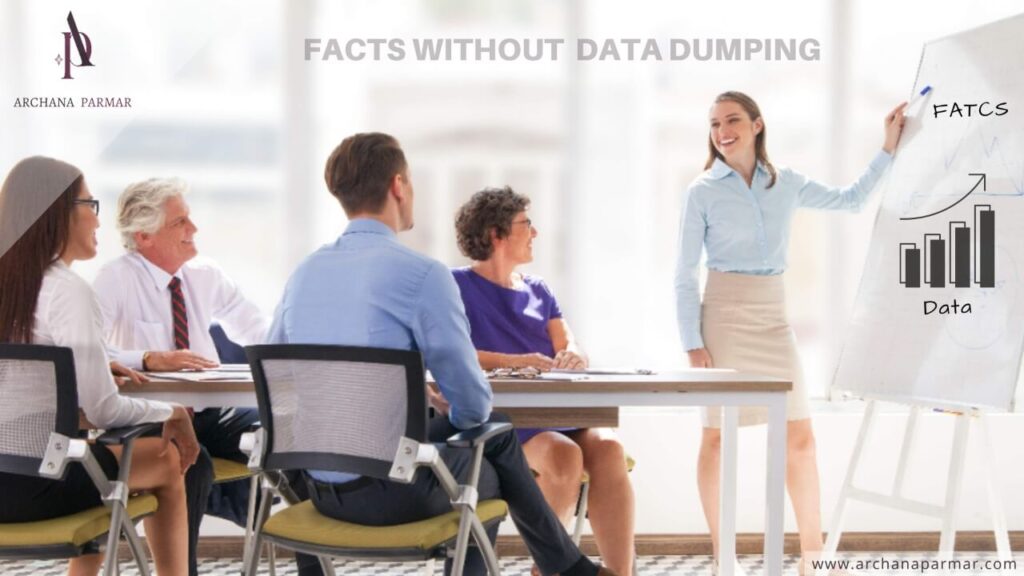How to explain facts without Data Dumping
You have spent sleepless nights and prepared your speech and presentation, next day very excitedly you deliver it, and instead of applause, you receive a tiring or questioning glare from the audience. This was a data-dump talk.
Data dump has many formats, sometimes in a collection of slides and sometimes in just one.
I have never seen an info dump that improved a speech; instead, it thwarts the conversation; instead, it introduces a topic in a shallow manner that the audience will be clueless about the work’s conceptual concerns. The worst kind of data dump is when you provide a quantity of data that can’t be absorbed in a short time.
Yes, information is essential but knowing how much to provide is the skill you must learn. Ditch the habit of bombarding with stats and figures without adequately explaining it to educate, inspire and connect with your audience.
Remember, you are the performer, not your data.
The Art and Science of telling your data
The human brain has its way of functioning. The left and right halves of the brain home different kinds of reasoning, according to scientists. The left side associates with structure, sequence, form, and order and operates linearly. The right side is responsible for creativity and surrounds concepts and connections that cannot be defined logically.
Often people present the facts and data applying the left-brain approach when needed is a right-brain process. Most presenters bring logic, structure, and form when the right brain yet rebounds around the right brain.
Why? Business people are result oriented instead of process-oriented unless it is about long-time strategy making, product designing, and problem-solving. For a process like a presentation, you have to reduce the time frame and deliver the message.
Let your right brain complete the conscious cycle’s operation first, and then use your left brain’s structure.
Focus, prepare, and then let the information flow. The entire thing is about timing and how to be creative and logical at the same time.
A presentation or a speech starts with the creative process. Remember, people who reject data absorb information. How you do it is the skill that can set you apart from your competition.
How to explain your data?
Without proper understanding or analysis of your data, you will end up trash dumping. So, what you can do is find the nuggets and profit from them.
For instance, suppose you have to give a presentation about a product, instead of listing the features, tell a story. Find a customer usage case and discuss that:
How the product changed the customer’s life for the better?
Ipod was introduced as your travelling companion with 1000 songs in your pocket so you need not bother about forgetting your favourite CD or Cassette (oh yes, these things existed). Steve Jobs didn’t do the data-dumping.
Or create a story with the product in its climax.
Or discuss the customer’s personality who may buy and use the product.
Or talk about how the product will change the audience’s life.
Form the story structure, talk about the trouble and the solution.
People can relate and help them understand better. Engage your audience; that’s the purpose. That’s the way it has to be done.
Tell stories to create a difference between forgettable boring speeches and conversations that people remember.
Just the way Steve Jobs first showed the world the iPhone.
Winding Up
Address information as a raw ingredient that has to be processed with your creativity and produce your speech, which the audience would love to receive.
When you rely more on the type of content, you take a longer time to deliver, and you make your audience see through many boring slides (which they can’t remember) and your back towards the most crucial element present there: your audience.
Avoid info-dumping, or you will lose your audience and your ability to connect, inspire and convince.

